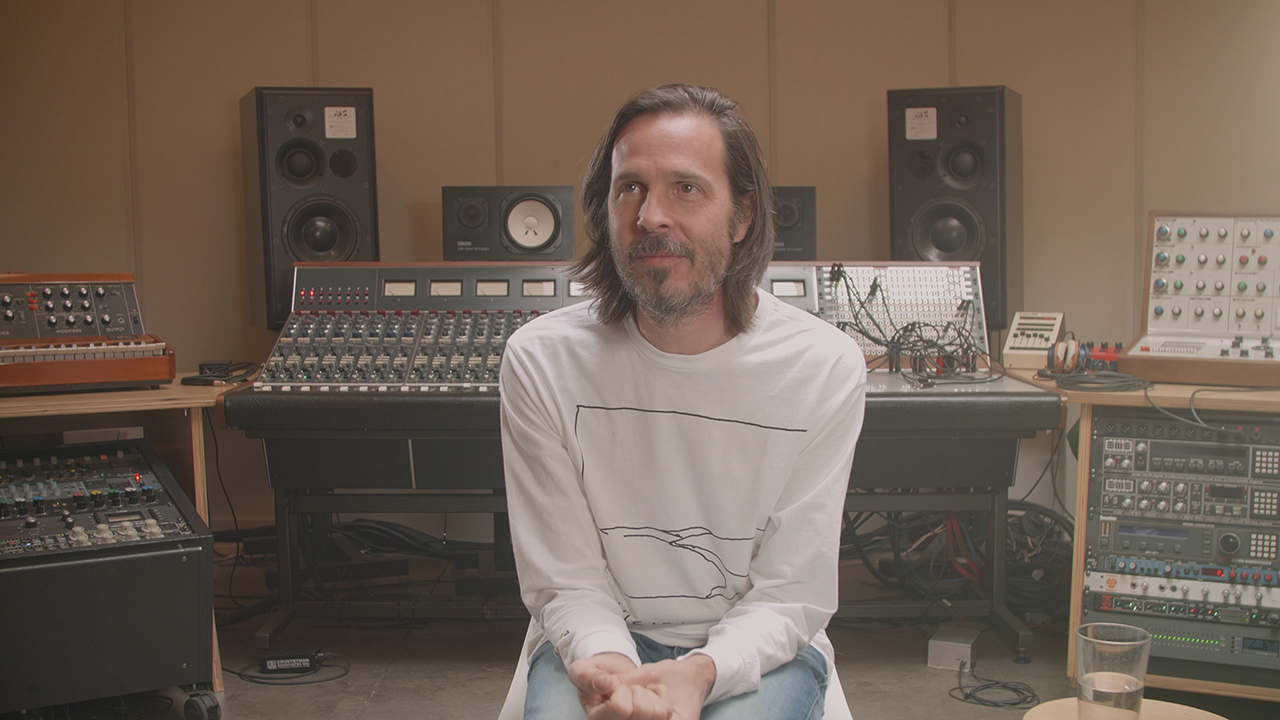Ernie Ball String Theory is a web series that explores the sonic origins of some of music’s most innovative guitar players. In this episode, we speak with Walter Schreifels about how the hardcore/punk scene broke barriers in his career, playing with Quicksand and Rival Schools, his inspiration to pick up the guitar, and more. Find out the top six things we learned below…
1. Walter Schreifels learned how to play guitar mostly by ear. (1:18)
WS: I remember my guitar teacher… when I asked him to teach me a Dead Kennedy’s song, he wouldn’t teach it to me. He was like, “I can’t teach you anything with a band that’s named Dead Kennedy’s. I just find that deeply offensive.” So, my money for guitar lessons was kind of running out, but it gave me the thought of like, “I’m going to have to figure these songs out for myself.” So I started figuring out other people’s songs just by ear.
2. Walter first got hooked to performing when he played at CBCG with Gorilla Biscuits. (3:40)
WS: My first public performance was at CBGBs and we played a Sunday matinée with my band, Gorilla Biscuits, and that was awesome. I mean the night before I could barely sleep, I was so nervous. I felt as we were doing it, it’s like, “This is awesome. We’re doing good.” Yeah. I was hooked. I mean, unsurprisingly, I mean, knew I would be into it, but I guess it was the night before, thinking about it. It was anticipation, but also fear, like, “This is going to suck.” But yeah, it went well. It was a really cool play. I played CBGBs too because I knew what CBGBs was. I had already had this kind of storied past. So, it was a pretty big place to do the first show, I thought, even though a lot of people were playing there.
3. Moving from an underground scene to larger audiences. (5:32).
WS: Yeah, major labels wanted to sign us so my rent could be paid and where we could go out and play around the country and have a different experience playing for, not just this scene, but to be put into a bigger arena in some way, that kind of pulled me as well. And the scene was just really kind of, I think, violent and falling apart at that point anyway. I think a lot of scenes do, it takes a few different people to kind of spark it and then it kind of reaches a certain critical mass and then the faction start to faction off and it’s just the nature of these things, and that’s where it was at that time.
4. It’s important to be inspired by others. (8:55)
WS: I remember, especially in the hardcore days, every week I would go to the shows and I would see my friends bands or other bands… and just be like, “Damn, that was a good mosh part. I want to write a mosh part that’s better than that. Or has some of that, but is enough of mine that they’re not going to bust me for ripping them off.” And by having that idea, you naturally, if you have your own style, you’ll say, “Oh, I ripped this off completely from that.” … But how does it feel when people feel that way about me? Awesome. Because people did that for me and that inspired me, maybe got me through something or inspired me.
5. Why Walter plays Ernie Ball Power Slinkys. (10:07)
WS: I’m generally playing the 11s. I kind of stepped up to 11s because, with Quicksand, we were dropping the guitar to D flat. So I started playing 11s but I had been playing 10s. Back in the day, I might even have heavier strings on the top of the guitar to hold the tuning. But 11s are kind of just a good. They can hold the tuning, but you can still kind of move around and you’re not so restrictive. But I played 10s for a long time, I wanted that floppiness. I wanted to try to see if I didn’t hit them as hard if I could hold the tuning, but I think 11s are just the nice, kind of a medium guy.
6. You don’t have to rip technically to create good music. (12:38)
WS: I remember learning guitar, there are guys that just ripped on me, and I just never thought I would get anywhere in the guitar game because I just didn’t have the discipline. But I think it was through the cool side of punk and hardcore, let me see that you didn’t have to rip, technically, to express something unique and exciting to people or say something cool. That technical skill was just an aspect in that and how you use your technical skill.
Strings
Walter Schreifels gets his signature sound using Ernie Ball Power Slinky electric guitar strings.

String Theory
Check out similar String Theory films from Ernie Ball featuring artists such as Frank Iero, Tom Delonge, Dustin Kensrue of Thrice, and Ilan Rubin.



Just search the electric guitar strings, acoustic guitar strings, or bass guitar strings pages to figure out what guitar strings to buy for your guitar or bass. Try the original Slinky guitar strings, the world’s #1 electric guitar string. For over 50 years, Ernie Ball Slinky electric guitar strings have been the favorite of musicians across the globe. Or try out the newest addition to the family, Flatwound Bass strings that have the tone of a roundwound and the feel of a flat. For acoustic players, try our classic Earthwood guitar strings. They are the most popular acoustic guitar strings and provide a crisp, ringing sound with pleasing overtones.